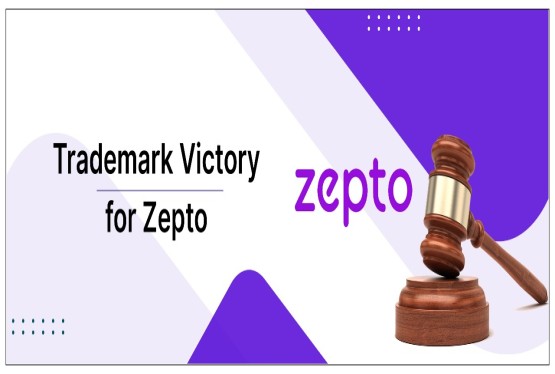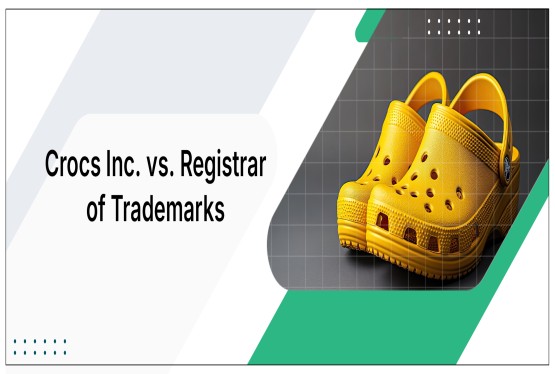Bloggers and YouTubers are at the forefront of this content revolution, creating engaging videos, informative articles, and captivating visuals that reach millions. However, with the ease of digital creation and sharing comes the increased risk of intellectual property theft, including trademark infringement. Protecting original work, including brand elements through trademark registration, is paramount for content creators to maintain control over their creations, build their brand, and reap the rewards of their efforts. This article outlines key IPR protections for Indian bloggers and YouTubers, including copyright, trademarks and remedies. It covers legal frameworks, practical safeguards, platform policies, and emerging challenges like AI content.
The Intellectual Property Rights (IPR) Landscape
Intellectual Property Rights (IPR) are legal protections granted to creators for their original works. For bloggers and YouTubers, IPR primarily includes copyright, trademarks, and, in certain cases, design and patent rights. The relevant Indian statutes for content creators include:
1. The Copyright Act, 1957
2. The Trademarks Act, 1999
3. The Information Technology Act, 2000
These laws collectively form the backbone of legal protections for digital creators in India.
Copyright Protection: Securing the Core of Creative Content
Scope of Copyright for Bloggers and YouTubers
Under Section 13 of the Copyright Act, 1957, copyright protection extends to original literary, dramatic, musical, and artistic works, as well as cinematographic films and sound recordings. For bloggers, their articles, infographics, and photographs are protected as literary or artistic works. For YouTubers, videos are safeguarded as cinematographic films, and background scores or voiceovers are covered under sound recordings.
Rights Conferred by Copyright
Section 14 of the Copyright Act grants creators exclusive rights to:
• Reproduce their work.
• Distribute copies to the public.
• Communicate the work to the public, including on digital platforms.
• Adapt or translate the work.
Judicial Precedents
In Eastern Book Company v. D.B. Modak (2008), the Supreme Court clarified that originality, rather than novelty, is the standard for copyright protection. This precedent is particularly relevant for bloggers who adapt existing information into unique, creative articles.
Trademark Protection: Safeguarding Your Brand Identity
Importance of Trademarks for Digital Creators
Bloggers and YouTubers often develop distinctive brand names, logos, and slogans to build their identity. Protecting these elements under the Trademarks Act, 1999, ensures that others cannot misuse them.
Section 2(zb) of the Act defines a trademark as a mark capable of distinguishing goods or services. Digital creators can register:
• Channel names.
• Blog titles.
• Unique hashtags.
• Merchandise brand names.
Legal Benefits of Trademark Registration
• Exclusive Rights: Section 28 grants the trademark owner exclusive rights to use the mark.
• Infringement Action: Section 29 enables owners to take legal action against unauthorized use.
• Passing Off: Common law remedies protect unregistered trademarks from misrepresentation, as upheld in Satyam Infoway Ltd. v. Sifynet Solutions Pvt. Ltd. (2004).
Case Study
In Kraftwerk v. VVX Ltd. (2020), the Delhi High Court restrained the defendants from using a deceptively similar YouTube channel name, reinforcing the importance of trademark protection for digital creators.
Plagiarism and Unauthorized Use: Remedies Under Indian Laws
Copyright Infringement
Section 51 of the Copyright Act deems any reproduction, distribution, or public communication of a copyrighted work without authorization as infringement. Penalties under Section 63 include imprisonment and fines.
Moral Rights Protection
Section 57 of the Act grants authors the right to claim authorship and object to distortions of their work. This provision is crucial for creators whose content is modified without consent.
Platform Policies and Takedown Mechanisms
Platforms like YouTube and WordPress implement takedown mechanisms under Section 79 of the IT Act, 2000. Creators can file complaints against infringing content, and intermediaries are obligated to act expeditiously to remove it.
Best Practices for Bloggers and YouTubers
1. Copyright Registration
While copyright protection is automatic, registration under Section 44 of the Copyright Act provides prima facie evidence of ownership. Bloggers can register their articles, and YouTubers can register their video scripts, footage, and audio.
2. Trademark Registration
Digital creators should register their brand names and logos with the Trademark Registry. This step prevents others from using similar marks and enhances brand value.
3. Licensing Agreements
For collaborations and sponsorships, creators should use clear licensing agreements specifying:
• Ownership of intellectual property.
• Permitted use of copyrighted content.
• Compensation terms.
4. Use of Digital Watermarks
Adding watermarks to videos and images deters unauthorized use. Advanced tools also enable creators to track their content online.
5. Monitoring Tools
Creators should leverage tools like Google Alerts, YouTube Content ID, and plagiarism detection software to monitor their work and identify unauthorized use.
6. Cease and Desist Notices
In cases of infringement, creators should issue cease-and-desist notices as a preliminary step before initiating legal action.
Judicial Precedents Supporting Content Protection
1. Tata Sons Ltd. v. Manoj Dodia (2001): The Bombay High Court restrained the defendant from using the plaintiff’s trademarks in domain names, underscoring the application of trademark laws to digital platforms.
2. Shreya Singhal v. Union of India (2015): Although primarily a free speech case, the judgment clarified intermediary liability under Section 79 of the IT Act, which applies to platforms hosting infringing content.
Legal Remedies for Digital Creators
Civil Remedies
• Injunctions to prevent further misuse of content.
• Damages or accounts of profits under Section 55 of the Copyright Act.
Criminal Remedies
• Imprisonment and fines for copyright infringement under Section 63.
• Punishment for identity theft under Section 66C of the IT Act.
Alternative Dispute Resolution (ADR)
ADR mechanisms like mediation and arbitration offer faster resolution of IP disputes, particularly in cases involving cross-border issues.
Challenges and Emerging Trends
Cross-Border Enforcement
The global nature of digital platforms complicates enforcement, as IP laws vary across jurisdictions. International treaties like the Berne Convention and the TRIPS Agreement aid in cross-border protection.
Artificial Intelligence (AI) and IP
AI tools are increasingly used to create content, raising questions about copyright ownership. Indian laws are yet to address these issues comprehensively.
Fair Use Doctrine
The fair use defense under Section 52 of the Copyright Act often conflicts with creators’ rights, particularly in parody and review content. Courts continue to navigate this delicate balance.
Conclusion
Protecting creative content is both a necessity and a challenge for bloggers and YouTubers. By the provisions of the Copyright Act, 1957, and the Trademarks Act, 1999, alongside platform-specific mechanisms, creators can safeguard their intellectual property effectively.
The evolving nature of digital content necessitates a proactive approach to IP protection. Bloggers and YouTubers must stay informed about legal developments, adopt best practices, and seek professional advice when needed. In doing so, they can focus on what they do best—creating impactful, engaging content—while ensuring their rights remain protected.
FAQs
Q1. What are the primary forms of intellectual property protection available to bloggers and YouTubers in India?
Ans. The main forms are copyright, which protects original creative works like articles, videos, and music, and trademarks, which protect brand identifiers like channel names, logos, and slogans. Design and patent rights might be relevant in some niche cases, but copyright and trademarks are most common.
Q2. How does copyright protect content created by bloggers and YouTubers?
Ans. Copyright protection under the Copyright Act, 1957, automatically applies to original literary, artistic, musical works, cinematographic films (videos), and sound recordings. It gives creators exclusive rights to reproduce, distribute, publicly display, adapt, and translate their work. Registration, while not mandatory, provides stronger evidence of ownership.
Q3. Why are trademarks important for bloggers and YouTubers, and what can they trademark?
Ans. Trademarks protect brand identity. Bloggers and YouTubers can trademark their channel names, blog titles, unique hashtags, and brand names for merchandise. This prevents others from using confusingly similar marks, protecting their brand reputation and allowing them to build brand recognition.
Q4. What steps can bloggers and YouTubers take to protect their content from infringement?
Ans. Several steps are recommended: copyright and trademark registration, using clear licensing agreements for collaborations, adding digital watermarks to content, actively monitoring for unauthorized use (using tools like Google Alerts and YouTube Content ID), and issuing cease and desist notices when infringement is detected.
Q5. What are the legal remedies available to bloggers and YouTubers in case of copyright or trademark infringement?
Ans. Legal remedies include civil remedies like injunctions (to stop further infringement) and damages or accounts of profits. There are also criminal remedies, such as imprisonment and fines for copyright infringement. Alternative Dispute Resolution (ADR) mechanisms like mediation and arbitration can also offer a faster way to resolve disputes.






























_(b)_of_the_Trademark_Act,_1999_(1)_crop10_thumb.jpg)



_crop10_thumb.jpg)




























_crop10_thumb.jpg)
_crop10_thumb.jpg)






_crop10_thumb.jpg)








_crop10_thumb.jpg)



_crop10_thumb.jpg)





























_crop10_thumb.jpg)

















_crop10_thumb.jpg)






_crop10_thumb.jpg)











































































































































_crop10_thumb.jpg)




































_crop10_thumb.jpg)












_crop10_thumb.jpg)































